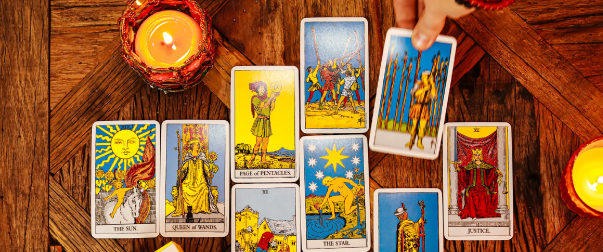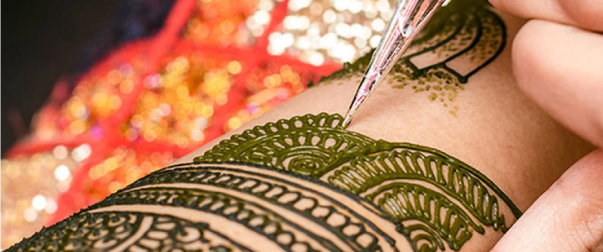Readings & Services
Tarot Readings
Henna Painting

Tarot Card Readings
Notably one of the most well known forms of divination, tarot card readings were not always a standard custom for cartomancers when the practice first originated.
Dating back to the late 14th century, European artists originally created the first deck of cards for parlor gameplay use, which featured the four suits similar to the ones used in modern day tarot (wands, cups, swords & pentacles). It wasn’t until decades later when Italian artists began painting an additional suit referred to as ‘triumph’ cards, that heavily illustrated pictures were added into the decks.
Today, these cards can be used for a plethora of spiritual ventures, including personal readings, daily guidance and decision making. Commonly during a session, the reader will lay out three cards which represent an individual's past, present and future, and will then interpret messages and provide guidance which may be relevant to the person on the receiving end. But there are a number of other manners in which the cards can be read as well.
How the cards are interpreted is also very dependent on the reader themself, as intuition plays a huge role in this practice. It’s also important that both parties enter a session with an intention, avoiding anything too specific in nature and rather pondering broader questions such as, ‘why am I feeling anxious about…” or “what is the energy surrounding my relationship right now….”

Henna Painting (COMING SOON)
Predominantly used as a symbolic ritual in Indian weddings and cultural ceremonies, henna art has been long admired for its intricate line work and carefully placed designs. During Indian weddings in particular, there is a specific event which members of the bridal party attend in order to have their henna, or ‘mehndi’ as it’s more commonly known, applied. It’s said that the darker the colour of the mehndi is, the stronger the marriage will be.
Applied using dye sourced from the Lawsonia Inermis plant, also known as ‘The Henna Tree’, this paste has been used not only as the core ingredient for mehndi tattoos, but as a natural dye for the hair and nails as well
Like with most tattoos, henna art also requires aftercare. Although it may be tempting, it’s important that the design is not touched for at least thirty minutes to an hour after its initial application, as this could lead to smudging and fading of the colour. It’s also imperative that the area is covered while showering, avoiding exfoliation for as long as possible, and that the skin is kept warm while the henna is still drying.
